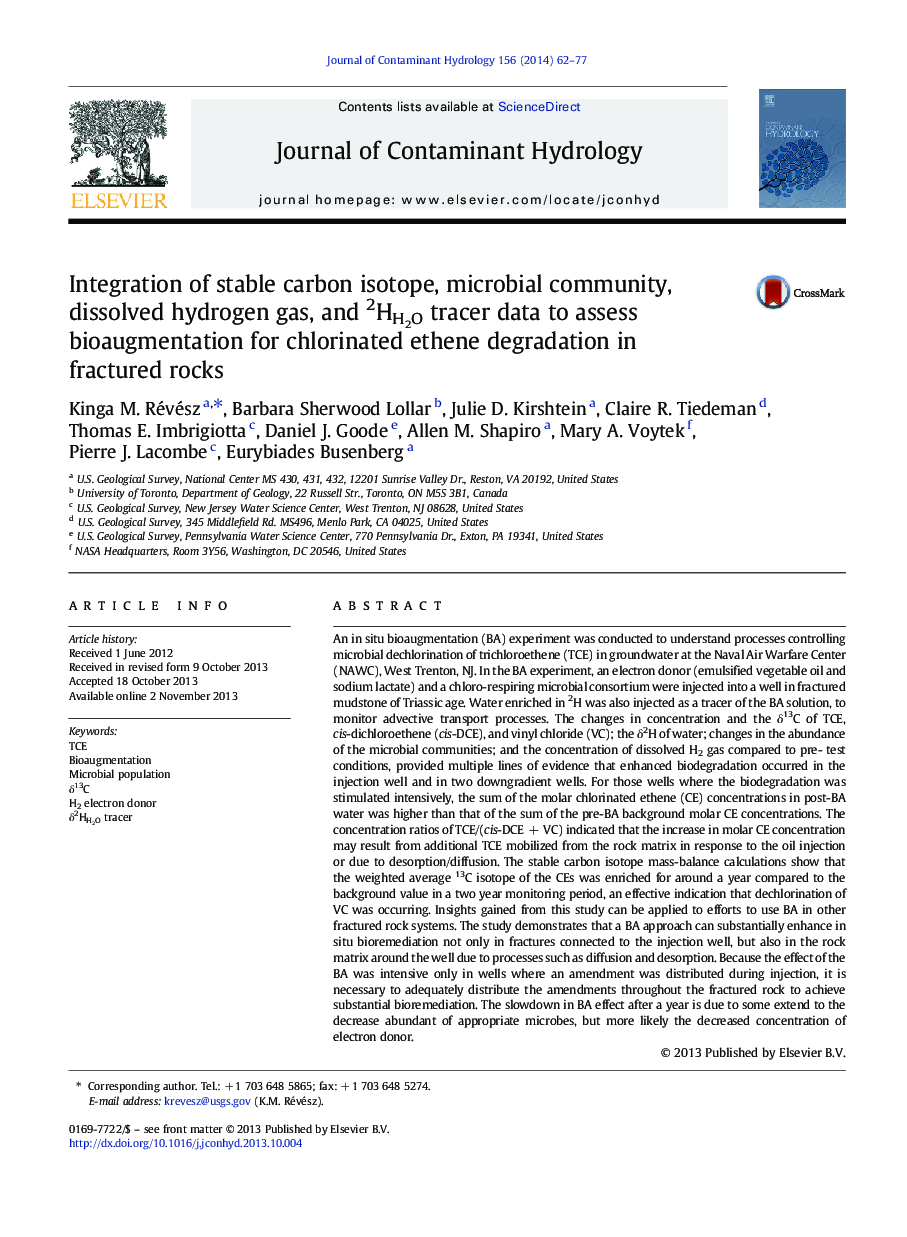| کد مقاله | کد نشریه | سال انتشار | مقاله انگلیسی | نسخه تمام متن |
|---|---|---|---|---|
| 4546593 | 1627051 | 2014 | 16 صفحه PDF | دانلود رایگان |

• Conducted Bioaugmentation (BA) of Chlorinated Ethene (CE) in fractured rock aquifer
• Monitored changes: a) conc., isotopes of CE; b) microbial community; c) electron donor
• The BA was effective in fractures hydraulically connected to wells with BA.
• Electron donors may be a limiting factor for intensive dehalogenation over time.
• Dechlorination has progressed past the dehalogenation of VC.
An in situ bioaugmentation (BA) experiment was conducted to understand processes controlling microbial dechlorination of trichloroethene (TCE) in groundwater at the Naval Air Warfare Center (NAWC), West Trenton, NJ. In the BA experiment, an electron donor (emulsified vegetable oil and sodium lactate) and a chloro-respiring microbial consortium were injected into a well in fractured mudstone of Triassic age. Water enriched in 2H was also injected as a tracer of the BA solution, to monitor advective transport processes. The changes in concentration and the δ13C of TCE, cis-dichloroethene (cis-DCE), and vinyl chloride (VC); the δ2H of water; changes in the abundance of the microbial communities; and the concentration of dissolved H2 gas compared to pre- test conditions, provided multiple lines of evidence that enhanced biodegradation occurred in the injection well and in two downgradient wells. For those wells where the biodegradation was stimulated intensively, the sum of the molar chlorinated ethene (CE) concentrations in post-BA water was higher than that of the sum of the pre-BA background molar CE concentrations. The concentration ratios of TCE/(cis-DCE + VC) indicated that the increase in molar CE concentration may result from additional TCE mobilized from the rock matrix in response to the oil injection or due to desorption/diffusion. The stable carbon isotope mass-balance calculations show that the weighted average 13C isotope of the CEs was enriched for around a year compared to the background value in a two year monitoring period, an effective indication that dechlorination of VC was occurring. Insights gained from this study can be applied to efforts to use BA in other fractured rock systems. The study demonstrates that a BA approach can substantially enhance in situ bioremediation not only in fractures connected to the injection well, but also in the rock matrix around the well due to processes such as diffusion and desorption. Because the effect of the BA was intensive only in wells where an amendment was distributed during injection, it is necessary to adequately distribute the amendments throughout the fractured rock to achieve substantial bioremediation. The slowdown in BA effect after a year is due to some extend to the decrease abundant of appropriate microbes, but more likely the decreased concentration of electron donor.
Journal: Journal of Contaminant Hydrology - Volume 156, January 2014, Pages 62–77